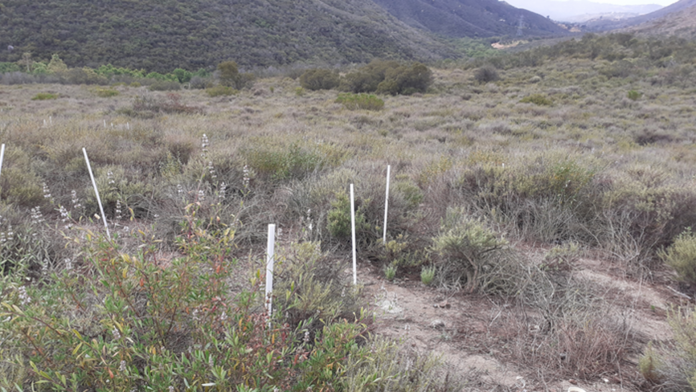Research from UC Riverside has suggested that nitrogen released by gas-powered machines causes dry soil to let go of carbon and release it back into the atmosphere, where it can contribute to climate change.
Industrial manufacturing, agricultural practices, and vehicles burn fossil fuels that release nitrogen into the air. As a result, nitrogen levels in the Earth’s atmosphere have tripled since 1850. The research team worked to understand whether this extra nitrogen affects the soil’s ability to hold onto carbon and keep it from becoming a greenhouse gas.
The study’s corresponding paper, ‘Effects of experimental nitrogen deposition on soil organic carbon storage in Southern California drylands,’ was published in the journal Global Change Biology.
The team uncovered some unexpected findings
“Because nitrogen is used as a fertiliser for plants, we expected additional nitrogen would promote plant growth as well as microbial activity, thereby increasing carbon put into soils,” said Peter Homyak, assistant professor in UCR’s Department of Environmental Sciences and co-author of the study.
This differs from what they saw in dryland soil covering much of Southern California. Instead, the team found that extra nitrogen causes dryland soil to acidify and leach calcium under certain conditions. Calcium binds to carbon, and the two elements leave the ground together.
How can nitrogen affect the biological process of soil?
To obtain their results, the research team sampled soil from ecological reserves near San Diego and Irvine that have been fertilised with nitrogen in long-term experiments. This allowed them to see precisely how much nitrogen was being added and account for any effects they observed.
In many cases, nitrogen can affect biological processes that, in turn, influence how soil stores carbon. Methods include fuelling plant growth and slowing down the microbes that help decompose dead things in the soil.
The researchers did not expect a significant effect on carbon storage through abiotic or non-biological means.
The pH scale measures how acidic or alkaline something is. In general, soils resist dramatic changes in pH by releasing elements like calcium in exchange for acidity. Due to the presence of nitrogen-acidified soils at some of the sites in this study, the soil attempted to resist this acidity by releasing calcium. As it did so, some of the carbon stabilised by association with the calcium was lost.
“It is a surprising result because the main effect seems to be abiotic,” commented Johann Püspök, UCR environmental sciences graduate student and first author of the study. “That means bare patches of soil with no plant cover and low microbial activity, which I always thought of as areas where not much is going on, appear to be affected by nitrogen pollution too.”
Dryland soil, which is characterised by a limited ability to retain moisture and low levels of organic matter, covers roughly 45% of Earth’s land area. It is responsible for storing a large amount of the world’s carbon.
We should prepare for the future by reducing carbon emissions
Future studies may shed more light on how much dryland soil is affected by nitrogen pollution in the way the study plots were. “We need more information about how widespread such acidification effects are and how they work under non-experimental conditions of nitrogen deposition,” Püspök explained.
However, since there is no quick fix for this phenomenon and no clear way to reverse the process once it has begun, the researchers recommend reducing emissions as much as possible to help soil retain its carbon stores.
Homyak concluded: “Air pollution generated by fossil fuel combustion has an impact on many things, including human health, by causing asthma. It can also impact the amount of carbon these dryland systems can store for us. For many reasons, we have to get a handle on air pollution.”








